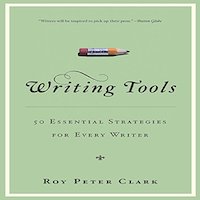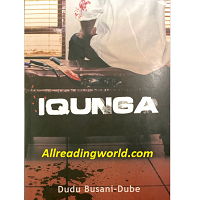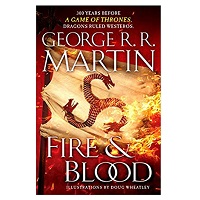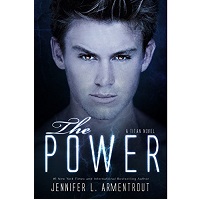Writing Tools by Roy Peter Clark EPUB & PDF – eBook Details Online
- Status: Available for Free Download
- Authors: Roy Peter Clark
- Publish Date: January 10, 2008
- Language: English
- Genre: Writing Skill Reference, Rhetoric (Books)
- Format: PDF / EPUB
- Size: 2 MB
- Pages: 288
- Price: Free
- ISBN: 9780316014991
Imagine each sentence you write printed on the world’s
widest piece of paper. In English, a sentence stretches from
left to right. Now imagine this. A writer composes a sentence
with subject and verb at the beginning, followed by other
subordinate elements, creating what scholars call a rightbranching sentence.
I just created one. Subject and verb of the main clause join
on the left (“a writer composes”) while all other elements
branch to the right. Here’s another right-branching sentence,
written by Lydia Polgreen as the lead of a news story in the
New York Times:
Rebels seized control of Cap Haitien, Haiti’s second
largest city, on Sunday, meeting little resistance as
hundreds of residents cheered, burned the police station,
plundered food from port warehouses and looted the
airport, which was quickly closed. Police officers and
armed supporters of President Jean-Bertrand Aristide
fled.
That first sentence contains thirty-seven words and ripples
with action. The sentence is so full, in fact, that it threatens to
fly apart like an overheated engine. But the writer guides the
reader by capturing meaning in the first three words: “Rebels
seized control.” Think of that main clause as the locomotive
that pulls all the cars that follow.
Master writers can craft page after page of sentences
written in this structure. Consider this passage by John
Steinbeck from Cannery Row, describing the routine of a
marine scientist named Doc (the emphasis is mine):
He didn’t need a clock. He had been working in a tidal
pattern so long that he could feel a tide change in his sleep.
In the dawn he awakened, looked out through the
windshield and saw that the water was already retreating
down the bouldery flat. He drank some hot coffee, ate three
sandwiches, and had a quart of beer.
The tide goes out imperceptibly. The boulders show and
seem to rise up and the ocean recedes leaving little pools,
leaving wet weed and moss and sponge, iridescence and
brown and blue and China red. On the bottoms lie the
incredible refuse of the sea, shells broken and chipped and
bits of skeleton, claws, the whole sea bottom a fantastic
cemetery on which the living scamper and scramble.
Steinbeck places subject and verb at or near the beginning
of each sentence. Clarity and narrative energy flow through the
passage, as one sentence builds on another. He avoids
monotony by including the occasional brief introductory
phrase (“In the dawn”) and by varying the lengths of his
sentences, a writing tool we will consider later.
Subject and verb are often separated in prose, usually
because we want to tell the reader something about the subject
before we get to the verb. This delay, even for good reasons,
risks confusing the reader. With care, it can work:
The stories about my childhood, the ones that stuck,
that got told and retold at dinner tables, to dates as I sat by
red-faced, to my own children by my father later on, are
stories of running away.
So begins Anna Quindlen’s memoir How Reading
Changed My Life, a lead sentence with thirty-one words
between subject and verb. When the topic is more technical,
the typical effect of separation is confusion, exemplified by
this clumsy effort:
For More Read Download This Book
EPUB



